mybatis 一级缓存是啥?5 个面试题回答你
一级缓存
主要内容:
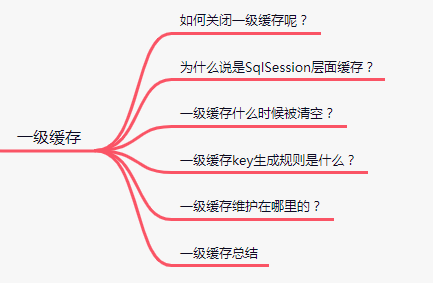
一级缓存也叫本地缓存(LocalCache),Mybatis的一级缓存是会话级别(SqlSession)层面进行缓存的。Mybatis的一级缓存是默认开启的。我们开发项目中不需要做任何配置,但是如果想关闭一级缓存,可以使用localCacheScopde=statement来关闭。
如何关闭一级缓存呢?
在BaseExecutor的中,请看下面代码:

为什么说是SqlSession层面缓存?
就是一级缓存的生命周期和一个SqlSession对象的生命周期一样。
下面这段中,就会使用到一级缓存。
`SqlSession sqlSession1 = sqlSessionFactory.openSession();
User user1 = sqlSession1.selectOne("com.tian.mybatis.mapper.UserMapper.selectUserById", 1);
User user2 = sqlSession1.selectOne("com.tian.mybatis.mapper.UserMapper.selectUserById", 1);
`
结果输出:

用两张图来总结:
第一次:查数据库,放入到缓存中。
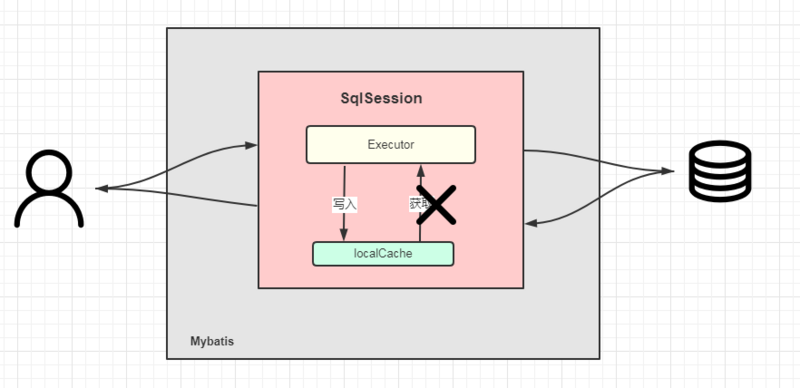
第二次:直接从缓存中获取。
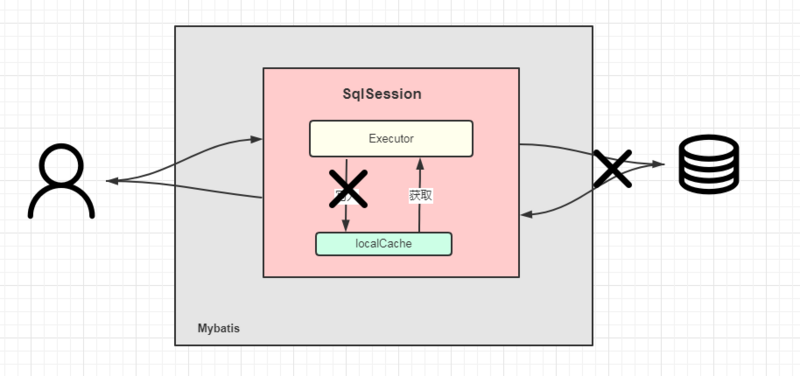
下面这段代码中就使用不到缓存
`SqlSessionFactory sqlSessionFactory = new SqlSessionFactoryBuilder().build(inputStream);
sqlSession = sqlSessionFactory.openSession();
sqlSession1 = sqlSessionFactory.openSession();
UserMapper userMapper = sqlSession.getMapper(UserMapper.class);
UserMapper userMapper1 = sqlSession1.getMapper(UserMapper.class);
System.out.println("第一次查询");
System.out.println(userMapper.selectById(1));
User user = new User();
user.setUserName("tian111");
user.setId(1);
userMapper1.updateAuthorIfNecessary(user);
System.out.println("第二次查询");
System.out.println(userMapper.selectById(1));
`
输出结果:

用三张图来总结:
第一次查询:sqlSession1查询数据库,放入到缓存中。

更新:sqlSession2进行更新,注意这里写入的是sqlSession自己的本地缓存。
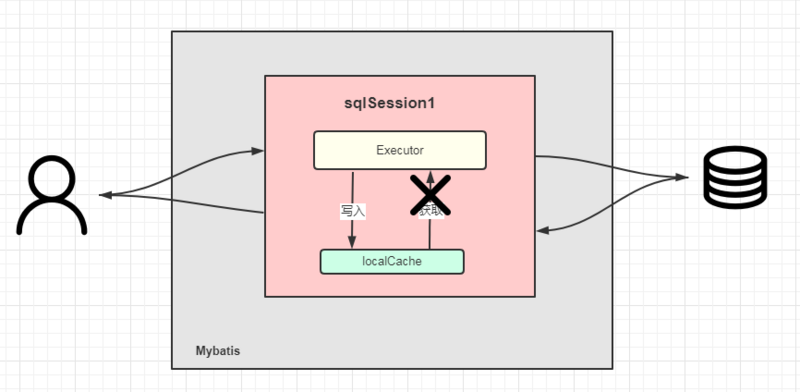
第二次查询:sqlSession1第二次查询。
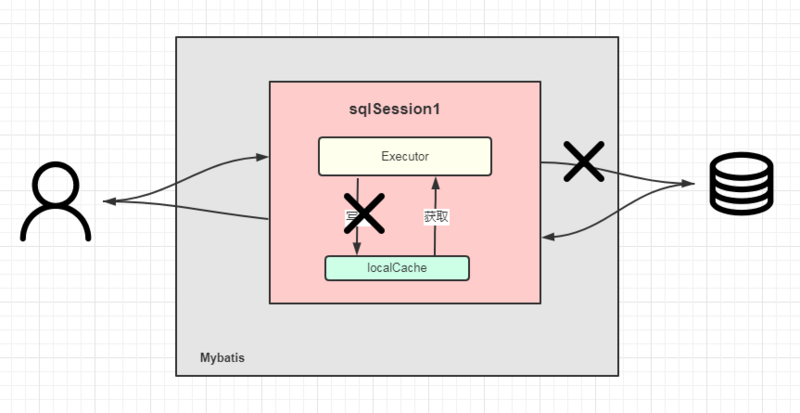
记住是一级缓存只能是同一个SqlSession对象就行了。
一级缓存维护在哪里的?
既然一级缓存的生命周期和SqlSession一致,那么我们可以猜想,这个缓存是不是就维护在SqlSession中呢?
SqlSession的默认实现类DefaultSqlSession,在DefaultSqlSession中只有两个属性可能存放缓存:
`private final Configuration configuration;
private final Executor executor;
`
configuration是全局的,肯定不会放缓存。
那就只能把希望寄托于Executor了。由于Executor是个接口,我们可以看看他的实现类:
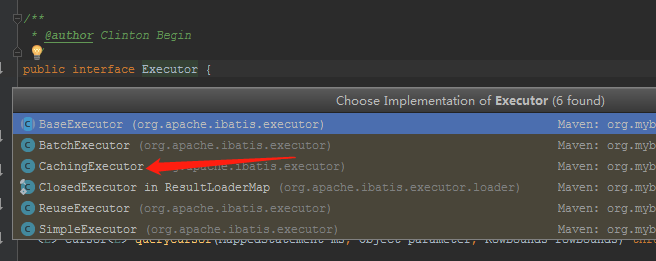
另外这里有个BaseExecutor。有各类也得瞄瞄。一看居然有东西。
`public abstract class BaseExecutor implements Executor {
private static final Log log = LogFactory.getLog(BaseExecutor.class);
protected Transaction transaction;
protected Executor wrapper;
protected ConcurrentLinkedQueue<DeferredLoad> deferredLoads;
//熟悉的家伙,基本缓存
protected PerpetualCache localCache;
protected PerpetualCache localOutputParameterCache;
protected Configuration configuration;
protected int queryStack;
private boolean closed;
protected BaseExecutor(Configuration configuration, Transaction transaction) {
this.transaction = transaction;
this.deferredLoads = new ConcurrentLinkedQueue<>();
this.localCache = new PerpetualCache("LocalCache");
this.localOutputParameterCache = new PerpetualCache("LocalOutputParameterCache");
this.closed = false;
this.configuration = configuration;
this.wrapper = this;
}
}
`
再看看BaseExecutor类图:
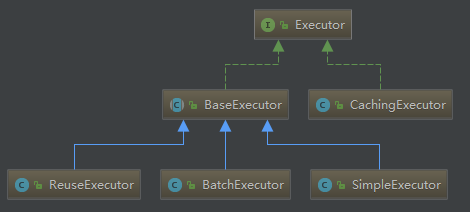
所以这就证明了,这个缓存是维护在SqlSession里。
一级缓存什么时候被清空?
在执行update、insert、delete、flushCache="true"、commit、rollback、LocalCacheScope.STATEMENT等情况下,一级缓存就都会被清空。
`@Override
public void clearLocalCache() {
if (!closed) {
localCache.clear();
localOutputParameterCache.clear();
}
}
`
update时,一级缓存会被清空。delete和insert都是调用这个update。可以从SqlSession的insert、update、delete方法跟踪。

LocalCacheScope.STATEMENT时,一级缓存会被清空。在BaseExecutor里的query方法中:

事务提交回滚时,一级缓存会被清空。
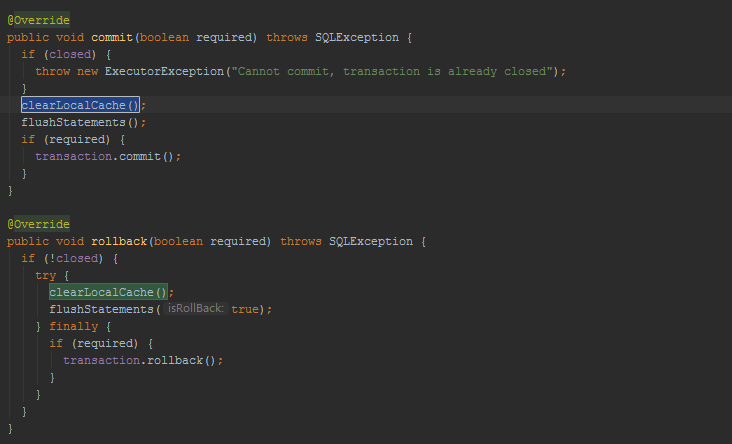
flushCache="true"时,一级缓存会被清空。

一级缓存key是什么?

下面就是一级缓存key的创建过程
`@Override
public CacheKey createCacheKey(MappedStatement ms, Object parameterObject, RowBounds rowBounds, BoundSql boundSql) {
if (closed) {
throw new ExecutorException("Executor was closed.");
}
CacheKey cacheKey = new CacheKey();
cacheKey.update(ms.getId());
cacheKey.update(rowBounds.getOffset());
cacheKey.update(rowBounds.getLimit());
cacheKey.update(boundSql.getSql());
List<ParameterMapping> parameterMappings = boundSql.getParameterMappings();
TypeHandlerRegistry typeHandlerRegistry = ms.getConfiguration().getTypeHandlerRegistry();
// mimic DefaultParameterHandler logic
for (ParameterMapping parameterMapping : parameterMappings) {
if (parameterMapping.getMode() != ParameterMode.OUT) {
Object value;
String propertyName = parameterMapping.getProperty();
if (boundSql.hasAdditionalParameter(propertyName)) {
value = boundSql.getAdditionalParameter(propertyName);
} else if (parameterObject == null) {
value = null;
} else if (typeHandlerRegistry.hasTypeHandler(parameterObject.getClass())) {
value = parameterObject;
} else {
MetaObject metaObject = configuration.newMetaObject(parameterObject);
value = metaObject.getValue(propertyName);
}
cacheKey.update(value);
}
}
if (configuration.getEnvironment() != null) {
// issue #176
cacheKey.update(configuration.getEnvironment().getId());
}
return cacheKey;
}
`
id:com.tian.mybatis.mapper.UserMapper.selectById
key的生成策略:id + offset + limit + sql + param value + environment id,这些值都相同,生成的key就相同。
示例:
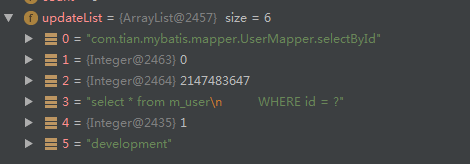
一级缓存总结
一级缓存的生命周期和SqlSession对象的生命周期一致。所以缓存维护在SqlSession中的属性executor里。
一级缓存默认开启。可以通过修改配置项把一级缓存关掉。
清空一级缓存的方式有:
update、insert、delete
flushCache="true"
commit、rollback
LocalCacheScope.STATEMENT












评论